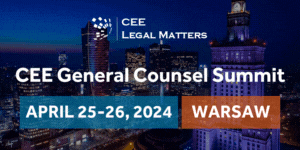
Inclusive Social Recovery
Ukraine is far from being a truly inclusive environment for amputees. The war and its tragic consequences – soldiers and civilians with limb loss – brought numerous urgent tasks into our social agenda. Social recovery is no less important than the economic one.
We met Alex Lewis, head of the Alex Lewis Trust (UK) and The Float Ukraine Plan, who came to Ukrainian hospitals providing care for amputees, to share his experience of living with prostheses, rehabilitation and alternative solutions for prosthetics. The aim is designing a longer-term program of support as well as a framework for partnerships to enable to scale and sustain this program in the long-term.

Olga Usenko: First of all, I would like to say thank you for coming here and supporting Ukraine and Ukrainians. Thousands of our people – both civilians and soldiers lost their limbs in the course of russian aggression. Access to prompt prosthetics for Ukrainian soldiers is a topical issue. What kind of approach do you recommend us to follow? Perhaps you could tell us a little bit how does this work in the UK?
Alex Lewis: What I’ve seen in the last 5 days is that your access to prosthetics is good. That you’re working with big companies that are providing knee joints and attachments such as ankles and feet, the socket design is the same as in the UK. There is no difference.
The problem is that the military can get hold of really good equipment and surgery. But then it’s not the same for civilians. And we all have to all live together in the country, in the same apartment blocks, the same streets.
Access to good equipment means access to a more independent life. For us it’s more important that we look at how we are able to develop different prostheses for different situations.
For instance, we brought over a post-operation sleeve, which means an arm amputee could wear something within 48 after hours after amputation. It means they get used to wearing something on their arm, they begin to understand what it is like living with amputation, they learn new tasks. It enhances their care pathway, their journey to independent living.
This is the little thing that we developed in the UK and we brought it with us.
I think that what we really need to focus on is what happens when the soldiers and the injured return to their homes and they get back to work when the war is over and the fighting ceases, what they would do then.
We need to understand their hopes, their dreams, their aspirations. A lot of young guys would want to be trained and start doing something completely new. We need to understand this so we are able to start developing the right equipment for when they return to normal life.
O. U.: I have heard about soft prosthesis. Is this new technology? How durable and reliable are they?
A. L.: It’s a new technology but it’s very simple. It is like buying a pair of trainers, but it is a prosthetic. When I’ve got my prosthetic arm, I didn’t feel I want to spend 16 hours of every single day with my residual limb in a cave. It’s just not natural. It’s got very hot and uncomfortable. And there is nothing else I could use as an alternative. I worked with Koalaa (ed. a company – producer of prosthesis), and we developed an alternative at the university. And so the soft prosthetic was born.
How many pair of shoes do you own? One really nice pair, and one really comfortable pair.
O. U.: Of course, I have to change them.
A. L.: Exactly, that’s how I feel about wearing prostheses. I think that’s important when you’ve got options. Some day you might feel you don’t want to use your prosthetics: you might be tired, you might have injured your arm, or have a problem with it. And if you can’t wear that prosthetic, what is the alternative? That is what we have developed. These are just simple solutions.
The technology is not bionic or high tech. But it’s really functional, affordable and comfortable.
O. U.: Is this a temporary solution until an amputee can afford a bionic/high-tech prosthesis?
A. L.: It fills the gap between post-op after amputation until you get your bionic hand. But there is a myth that bionic hands are brilliant and functional. In my experience, all my splitable prostheses that I wore for 10 years give me more functionality. People are drawn in by bionic hands, the way they work, it’s quite mysteries and really cool.
But it does not necessarily mean it’s going to be adventive to that amputee. I’m trying to explain that what looks the best might not be the best thing for you. Our product is giving other solutions and alternatives really.
O. U.: Do you plan to bring these prostheses from the UK, or to arrange their production here in Ukraine?
A. L.: We would like to see an agreement that we could possibly manufacture in the UK through a licensing deal. We feel that if that can be done, it’s in negotiation at the moment with Koalaa, a company that produces soft prosthesis.
What we want you guys in Ukraine to do is to come up with other solutions. We need to inspire university students and the injured to come up with their own ideas to develop and get more products for the amputee industry space.
O. U.: As far as I understand, this is a big organizational challenge as each prosthesis is designed individually. So, shouldn’t special treatment be arranged here?
A. L.: I think that is a problem. The method of making a socket for any amputee is quite long winded. It’s really an old technology. But there are smaller companies in and around Europe that are looking at alternative solutions. Sockets that can be remolded up to 10ntimes. So, as your residual limb changes its shape. For instance, when it’s hot my arm expands, when it’s cold it withers a little bit, which means the socket does not stay on or it’s uncomfortable. Companies like Amparo are looking at alterative solutions so sockets could be used up to 10 times rather than just once.
Another company called Prosfit are 3D scanning limbs, and they make the socket and send it you in the post. There are lots of small companies looking at other ways of developing more cost-effective but quicker solutions for the amputees.
O. U.: In terms of the war, the Ukrainian state is clearly unable to finance all prosthetics, and we definitely need assistance from our partners. From your experience, what options are available to finance prosthetics and related medical support? Is it possible to arrange funding through foreign charitable funds and other special foundations?
A. L.: The problem is the bionic: the hands, knees, ankles and feet are unbelievably expansive. When I lost my legs and arms 10 years ago now, the amount of money that I would have needed to have arms and legs for 25 years was 4 million dollars.
It’s just too expensive. That is why it’s so important to develop engineering solutions in Ukraine, and then you can start to develop your own prosthesis. You are an amazingly technologically advanced country.
Believe me, we need to create a group of like-minded university professors and students working together on the solution for injured amputees and developing new technologies in Ukraine rather than having to buy or be supported by other countries from all over the world. I think if you are entrepreneurial, you will be able to develop new solutions here.
That’s what I hope. And then the new solutions will be bought by others, all over the world and that drives your economy and brings money into the country. It’s so important that we try to create a system where everyone else is supporting you and you’re making some amazing advancements when other countries are coming to you rather than you going to every other country.
O. U.: Thank you.
Posted in Recovery Talks






